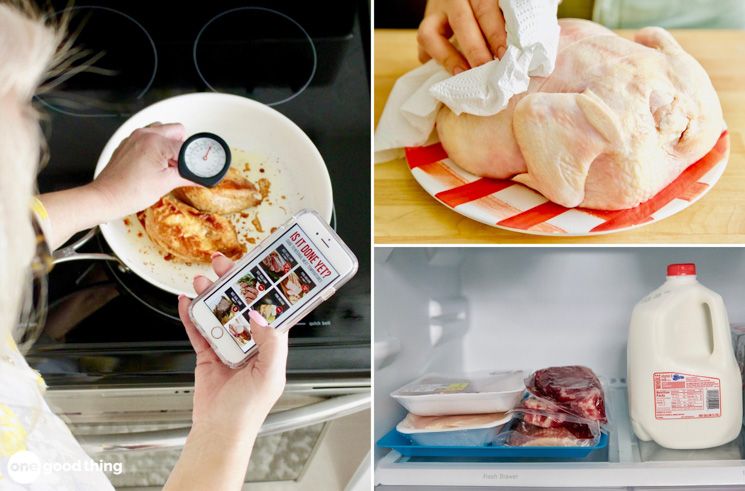
9 Common Food Safety Mistakes to Avoid
9 common food safety mistakes to avoid – Food safety is crucial for our health, but it’s easy to make mistakes in the kitchen. From cross-contamination to improper storage, these common errors can lead to foodborne illnesses. Let’s delve into nine common food safety mistakes and learn how to avoid them, ensuring delicious and safe meals for everyone.
This article will cover essential aspects of food safety, guiding you through practical tips and techniques to safeguard your kitchen and your well-being. We’ll explore everything from proper handwashing and cooking temperatures to safe thawing practices and the importance of checking expiration dates.
By understanding these crucial principles, you can create a safer and more enjoyable food experience for yourself and your loved ones.
Cross-Contamination

Cross-contamination is the transfer of harmful bacteria, viruses, or other microorganisms from one food or surface to another. It’s a major food safety concern that can lead to foodborne illnesses.
Understanding Cross-Contamination
Cross-contamination occurs when raw foods, which may harbor harmful bacteria, come into contact with cooked foods or ready-to-eat foods. This can happen in various ways, including:
- Using the same cutting board or utensils for raw meat and vegetables without proper cleaning.
- Storing raw meat above ready-to-eat foods in the refrigerator, allowing juices from the raw meat to drip onto other foods.
- Touching raw meat and then touching cooked food without washing your hands.
- Leaving raw meat or poultry out at room temperature for extended periods, allowing bacteria to multiply.
Preventing Cross-Contamination, 9 common food safety mistakes to avoid
Preventing cross-contamination is crucial for ensuring food safety. Here are some practical methods to follow:
- Wash your hands thoroughlywith soap and water for at least 20 seconds before and after handling raw meat, poultry, seafood, or eggs. Wash your hands again after touching raw produce, especially if you have been handling raw meat.
- Use separate cutting boardsfor raw meat, poultry, seafood, and vegetables. Ideally, use different colored cutting boards to differentiate between raw and cooked foods.
- Wash and sanitize utensilsthoroughly after handling raw meat or poultry. Use hot, soapy water or a dishwasher with a sanitizing cycle.
- Store raw meat, poultry, and seafoodin the refrigerator below ready-to-eat foods. This prevents juices from raw meat from dripping onto other foods.
- Cook foods to the proper internal temperatureto kill harmful bacteria. Use a food thermometer to ensure foods are cooked to the recommended temperature.
- Refrigerate perishable foodspromptly after cooking or purchasing. Avoid leaving food out at room temperature for more than two hours.
Concluding Remarks: 9 Common Food Safety Mistakes To Avoid
By adopting these food safety practices, you can significantly reduce the risk of foodborne illnesses and enjoy peace of mind knowing you’re creating a safe and healthy environment for your kitchen. Remember, food safety is an ongoing process, so staying informed and practicing these habits regularly is key to preventing foodborne illnesses and enjoying delicious meals with confidence.
It’s amazing how something as simple as a walk can make such a big difference. We all know those 9 common food safety mistakes to avoid, but sometimes we need a little reminder. Maybe a walk together would help us stay focused on what’s important, like staying healthy and safe, especially when it comes to food.
How walking together helps you stay together is a great reminder that quality time with loved ones can help us make better choices, like being more careful with our food preparation. After all, we don’t want to get sick from those 9 common food safety mistakes, right?
So let’s grab our shoes and go for a walk, together.
From cross-contaminating surfaces to neglecting proper cooking temperatures, there are plenty of food safety mistakes we can make. But while we’re focused on those, it’s also important to consider the nutritional aspect, and that’s where experts debate should you supplement comes in.
Ultimately, ensuring a healthy diet means being aware of both the food we eat and how we prepare it, and that includes considering the potential need for supplementation.
From improper handwashing to cross-contamination, there are a surprising number of food safety mistakes that can lead to foodborne illness. It’s important to be mindful of these pitfalls, and taking a few simple steps can go a long way in keeping your food safe.
And while we’re on the topic of healthy habits, don’t forget that even how short bursts of exercise can benefit your health – just 10 minutes a day can make a difference. So, by following food safety guidelines and incorporating some movement into your routine, you’ll be on your way to a healthier and happier you!

